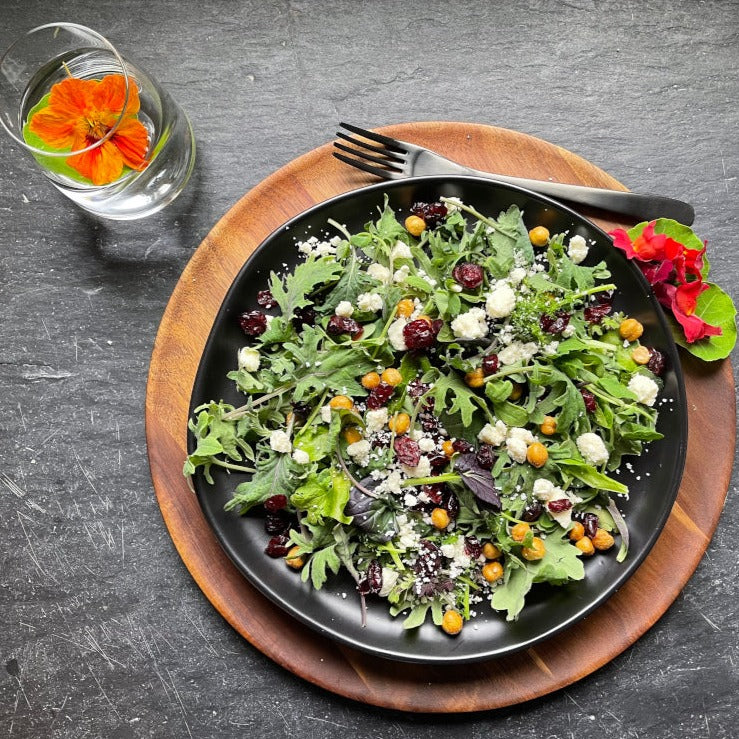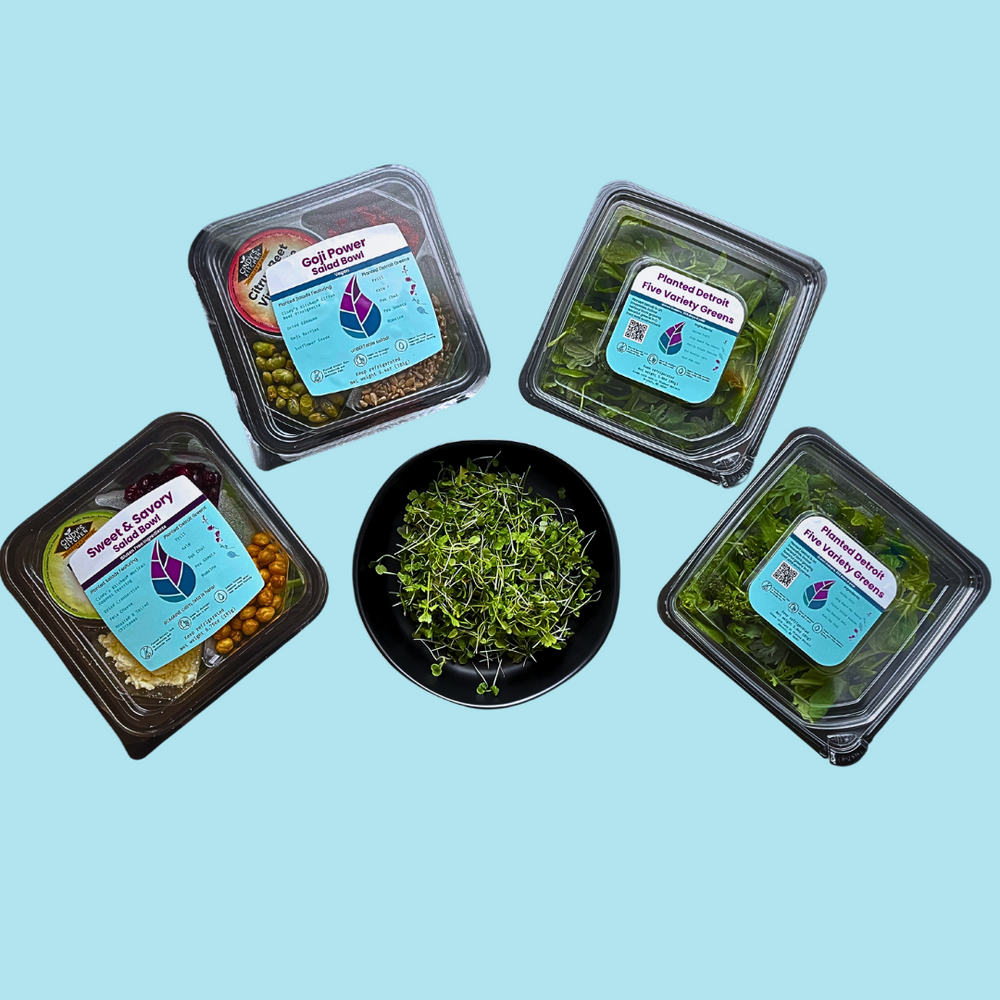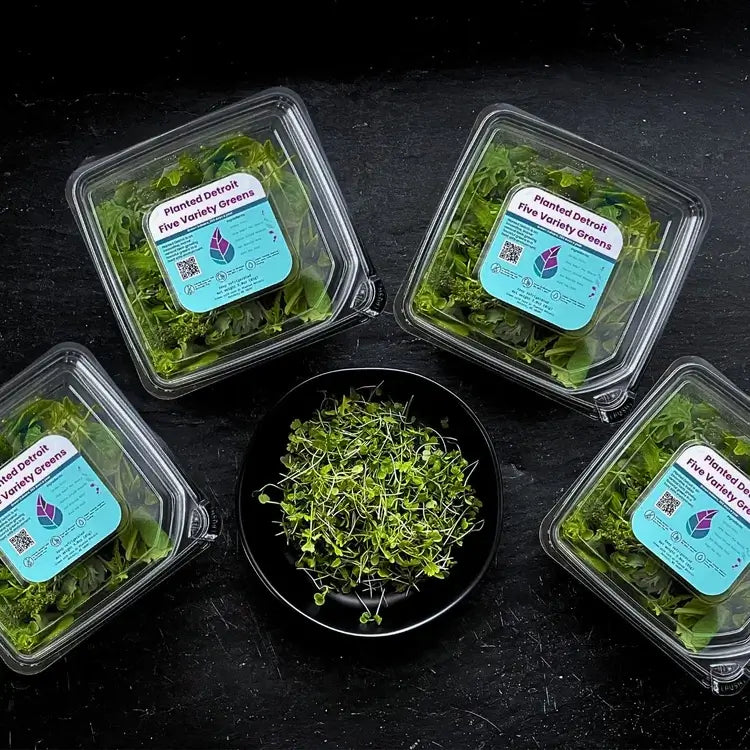
Let’s play a quick game: Answer this question as you think about everything you’ve eaten today: How much of it came from some farm field halfway across the country and processed beyond recognition? Enter commodity crops—the unsung heroes (or villains?) of your plate.
Corn, wheat, soybeans, and rice: these four are the most widespread crops worldwide and have conquered just about everything within the human world of food—from breakfast cereals to late-night snacks—even sodas. And, while billions get fueled with it, it raises large questions about nutrition, sustainability, and the meaning of the concept of "fresh.".
But what if there was some way to outsmart these monoliths, to break loose from their monopoly?
Enter your neighborhood hero here: Planted Detroit. Who comes swooshing in—fresh, new, locally produced greens and visions of changing eating habits?
Do you think you are ready to zoom in on the crop-to-table journey? Shall we dig deep?
Commodity Crops 101: The Basics and Beyond
How Commodity Markets Work | WSJ
Commodity crops, namely corn, barley, wheat, soy, and rice, are probably the ones that are at any time on your plate when you sit for a meal, just a few steps ahead of your face. These agricultural heavyweights dictate farming on a worldwide scale, as they constitute the backbone for a plethora of processed foods, snacks, and biofuels.
While they have their vital contribution toward feeding mankind and providing an economic cog, their cavalcade has come at a price-overreliance on these crops, which could limit food diversity, compromise nutrition, and, in some instances, fruitfully create endless limits.
Is there a more balanced way to offer benefits versus sustainable, nutrient-dense crops? Let's take the food world and dive into commodity crops to assess their effects in detail.
The A-Listers of Agriculture
Commodity crops are huge, powerful, and always in your face. These include corn, wheat, soybeans, and rice. From powering your cereals to lurking in your salad dressings to fueling the car you took to get that soda, chocolate bar, and cereal, they go far, baby.
From sodas with their high-fructose corn syrup and chocolate bars stuffed with soy lecithin to the pillars of modern food processing, if you eat, well, you just consumed commodity crops.
Feeding the World
These crops aren't just versatile but lifelines; they feed a large number of people, sustain the global economy, and facilitate affordable processed foods. Sounds cool, right? But there's a catch—overproduction and sidelining of food diversity, replacing entire diets with variations of corn and wheat.
And while they are important for food security, they certainly are not poster children of health or sustainability.

How Commodity Crops Sneak Onto Your Plate
Ambushed by Processed Food
Picture this: You’re munching on your favorite snack-the one you love—maybe chips, maybe cookies. Surprise! Corn and soy are probably at the party. Corn syrup shows up to sweeten it up, corn oil to crisp it up, and soy lecithin to hold it up. Not even your salad dressing or soda is spared.
These crops are what make processed foods so affordable and long-lasting; at what price? Additives are explosive calorie bombs, removed from nutrient energy. They are so "meh" rather than magical.
The Obvious Offenders
Bread? Pasta? Rice bowls? Guilty as charged. Wheat and rice dominate the world's diets—from your buttered toast to sushi. Although staples, they leave little room for alternatives that pack a nutritional punch.
The Sneaky Cameos
Think commodity crops end with snacks? Think again. Animal feed contains them in eggs, milk, and steak. That juicy burger is part of the cycle, back to those cornfields.
The Impact of Commodity Crops on Your Health and the Environment
 Health: More Calories, Less Nutrition
Health: More Calories, Less Nutrition
Let us talk about the elephant in the room: overprocessed foods. These are overprocessed; they are stripped of fiber and nutrient-poor crops that stand out as prominent culprits in the rising childhood obesity epidemics, diabetes, and nutrient deficiencies at large. Who requires corn syrup anyway?
Environmental Costs
Monocropping is as monotonous as it sounds: planting the same crop year in and year out. Yes, it is efficient, but the price is that it will ruin the environment. The soil gets depleted, pesticides can be laid down in alarming quantities, and global warming speedily goes into high gear. Plus, large farms feed like a 32-ounce steak at an all-you-can-eat steakhouse.
Economic and Social Impacts
Overriding reliance on these crops brings too much weight against small farmers and diminishes food diversity. The fruit of it: monoculture diets and farmers are at war to make ends meet. It is like putting all your grain into one basket and then holding your breath and praying that the basket doesn't tip over.
The Role of Local Farming in Diversifying Diets
 Offering Nutrient-Rich Alternatives
Offering Nutrient-Rich Alternatives
Shout for joy: Local farming is back again, and it's fresher than you've ever seen. Enter Planted Detroit, which grows leafy green vegetables and edible flowers. These amazing additions to your diet combine nutrients with enjoyment. You get leafy greens, herbs, and vegetables packed with vitamins instead of mush.
Promoting Sustainability
Hydroponics, urban farming, and other trends mean fewer food miles, less water pollution, and happier soils. Your plate has fresh greens on it and has not traveled 1000 miles away to reach you. Leading the charge is Planted Detroit, showing the world that sustainability could also be delicious.
How Planted Detroit is Changing the Narrative
Imagine no more mega-farms or reliance on the same four crops. This is the future Planted Detroit is building.
Rather than relying on mass production to sell canned and processed commodity crops transported under extremely harsh conditions for thousands of miles, Planted Detroit is farming fresh, nutrient-dense produce in the core of urban communities.
The secret? Hydroponics is an advanced farming technique that uses water instead of soil. It's an innovative approach to growing greens, herbs, and edible flowers in a controlled environment—protecting the produce itself and minimizing somewhat smarter, greener, and exponentially more efficient than farming.
 But it's not all about the farming techniques—what's more important is that local food is a way of life. Keeping your greens fresher and tastier, Planted Detroit uplifts the local economy and opens a whole new range of healthy food options in the communities.
But it's not all about the farming techniques—what's more important is that local food is a way of life. Keeping your greens fresher and tastier, Planted Detroit uplifts the local economy and opens a whole new range of healthy food options in the communities.
With your purchase from Planted Detroit, you're supporting not just fresh greens but an entire movement toward a better food future.
So why should you eat processed vegetables when you can taste the freshness of delicious local produce? It's time to flip the script on your plate, one leafy green at a time.
Conclusion
From field to plate, commodity crops have shaped diets, economies, and even the environment. Where there is the versatility of commodity crops: It's certain that their dominance comes at the cost of health, diversity, and sustainability. But here is the good news: change is possible, and it starts with what is on your plate.
Planted Detroit offers a powerfully different alternative. Local hydroponics farming thus cuts back on environmental impacts while offering the surety of improved nutrition and stepping down from the overprocessed food chain. Their fresh produce is part of a larger movement aiming to regain control over our food system.

All that goes into your mouth is personal. You can always choose the tried and tested, the old narrative of commodity crops, or a new and pretty healthier narrative. Diversify your food. Bake that frantic cake. Go local. Join the sustainability movement.
Your plate creates the world—choose wisely, eat consciously, and may every meal turn into a bauble that please be a step toward a better food system.


